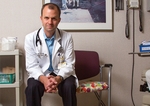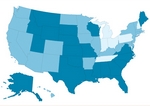profession
Primary care shortage evident in Connecticut
■ Waiting times could get worse once patients newly insured under federal health reform begin seeking physician care.
By Kevin B. O’Reilly — Posted May 11, 2010
- WITH THIS STORY:
- » Related content
Nearly one in four Connecticut primary care physicians is refusing to take on new patients, according to a survey of the state's family doctors, internists and pediatricians.
For those primary care doctors who are accepting new patients, there's an 18-day wait for a routine office visit, said the study, while existing patients wait more than 13 days
The survey of nearly 500 primary care physicians was conducted in fall 2009. It points to the challenge the state's doctors will face in caring for patients obtaining insurance under the federal health reform law, said Audrey Honig Geragosian, co-author of the study published in the May Connecticut Medicine (link).
"One of the most noteworthy results of this research was to find such a high proportion of primary care physicians aren't accepting new patients today, before any sort of reform of any kind comes into play," said Geragosian, communications director at the Connecticut State Medical Society, which publishes Connecticut Medicine. "That suggests a scarcity of access today, and when you add more patients to those panels, then the problem gets worse."
Because so many doctors already refuse new patients, the burden on those with open panels will be even higher, the study found. Researchers examined the uninsured rate among adults younger than 65 in each county in the state and calculated how many patients each primary care physician still accepting new patients might have to accept. In Fairfield County, Conn., each primary care doctor would be responsible for an additional 186 patients who are now uninsured. In Tolland County, Conn., the figure was 484.
Connecticut has 89.4 active primary care physicians per 100,000 residents, according to the Assn. of American Medical Colleges' November 2009 work force report. That is slightly above the national average of 79.4 per 100,000.
But problems go beyond work force issues, Geragosian said. The physicians surveyed reported trouble dealing with insurers on claims and referrals. More than 30% said they thought about moving to another state to practice, and nearly one-fifth said they might become hospitalists or make some other career change. The medical society is pushing for administrative simplifications and medical liability reforms.
"Something has to give," Geragosian said. "Something has to change, or it will become harder and harder for patients to get the care they need and deserve and our physicians want to provide."












